Tuesday Triage #92
- TUESDAY TRIAGE #92 by Vadim Drobinin
- On stars
- Things I enjoyed reading
- 1. Morning, Noon, and Night With Joké Bakare at Chishuru in Brixton by @AdamCoghlan
- 2. A New Story for Stonehenge by Simon Akam
- 3. One-line drawings by Zack Scholl
- 4. Where I go: my life as a mentalist by Gabe Abelson
- 5. Are film critics losing sync with audiences? by stephenfollows
- 6. The book that sank on the Titanic and burned in the Blitz by Tim Stokes
- 7. The remarkable brain of a carpet cleaner who speaks 24 languages by Jessica Contrera
- 8. The Chinchillas and the Gold Mine by Ed Stoddard
- 9. Redesigning an App, One Day a Week at a Time by @pketh
- 10. How to sign off an email by Bartleby
- Things I didn't know last Tuesday
- 1. Tselovalnik
- 2. Artificial amplification of the taste of salt
- 3. Monobloc
- 4. Five Suns
- 5. Zettelkasten
- 6. Bonne projection
- 7. Chicken of Tomorrow contest
- 8. Hydrazine toxins in morels
- 9. Sprezzatura
- 10. The alteration of the Doctor's Sausage recipe
- Book of the week
- Thank you and see you in a week!
TUESDAY TRIAGE #92
by Vadim Drobinin ¶
Your weekly crème de la crème of the Internet is here!
19.04.2022 (read in browser)
-
Intro
Whatever is on my mind this week. -
Things I enjoyed reading
Ten-ish articles I found worth reading. -
Things I didn't know last Tuesday
Ten-ish facts I didn't know when I wrote the previous edition. -
Book of the week
Some thoughts on the latest book I've read.
On stars ¶
As I mentioned last time, for these two weeks I am celebrating my birthday by (mostly) eating seasonal tasting sets.
This journey is nearing towards the end, so here are a few dishes that were the most memorable to me so far (in no particular order).
Sasha cooked me a set of seven dishes (she spent a few days on prep and I pretty much was banned from the kitchen for that time). This is a salmon and whiting terrine with edible flowers and "soy" sauce:
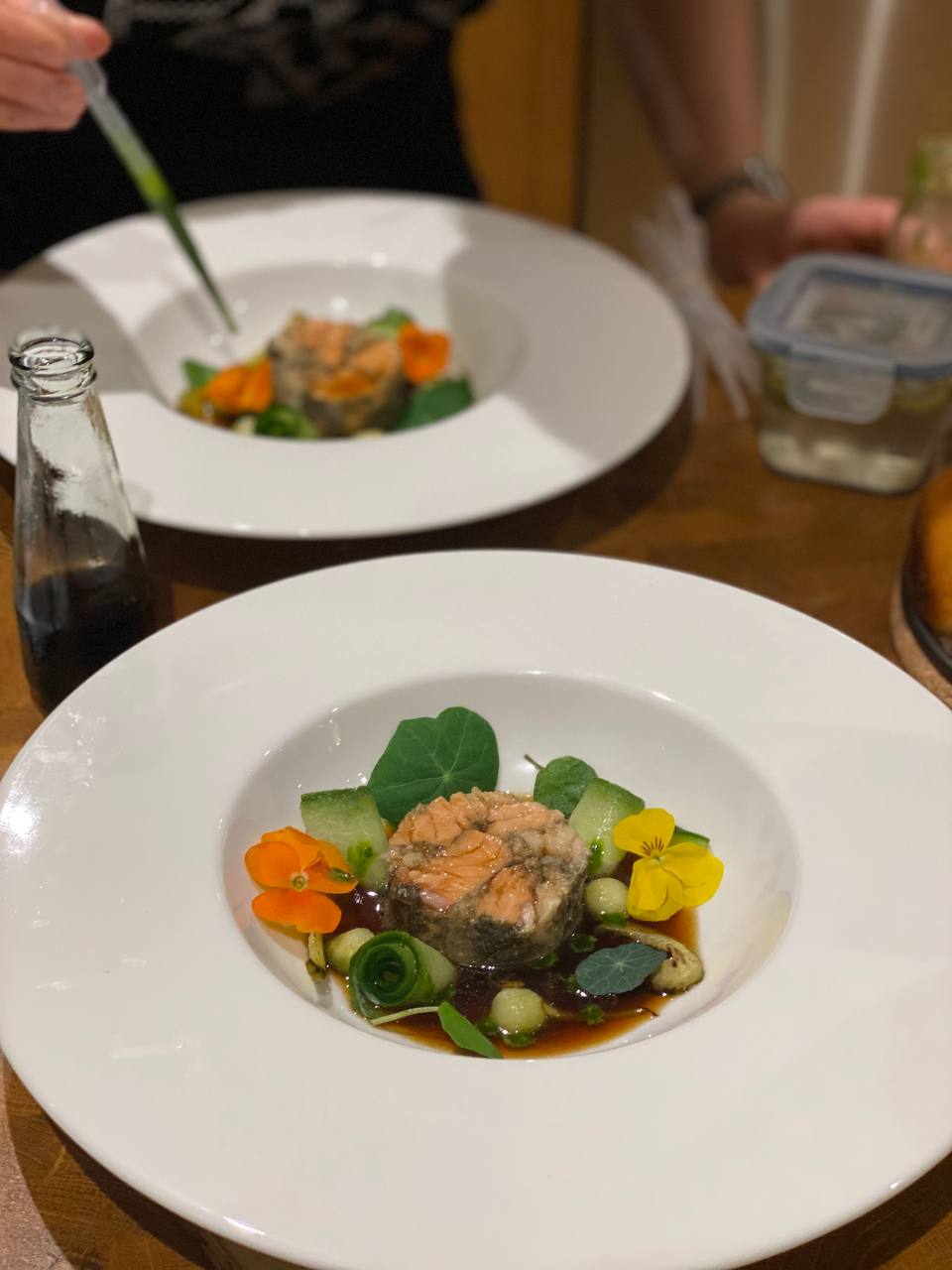
And this is a perfectly cooked venison with plum sauce:
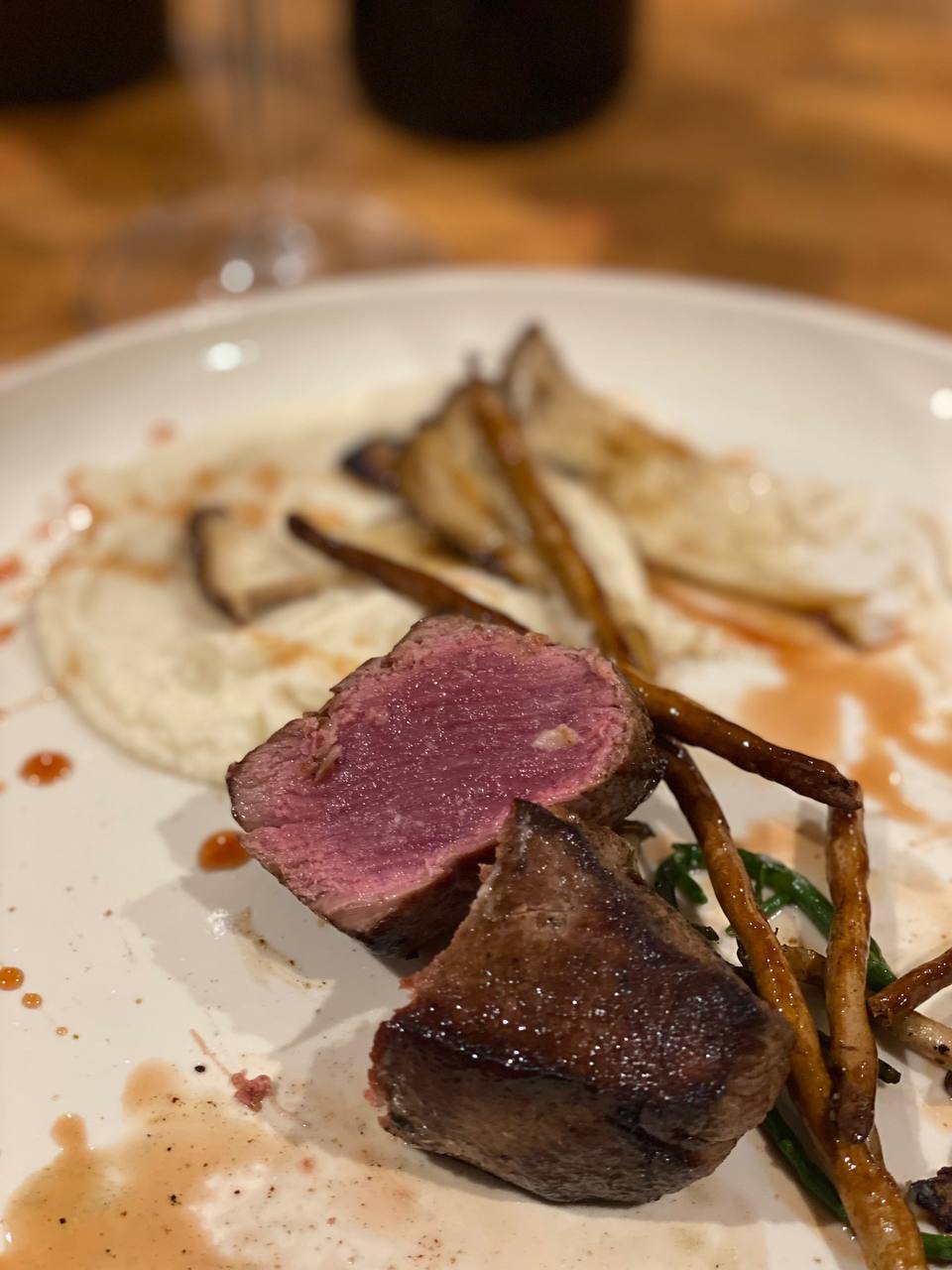
An amuse bouche of snail and spinach in a thin layer of breadcrumbs at ⭐️⭐️ Clove Club:
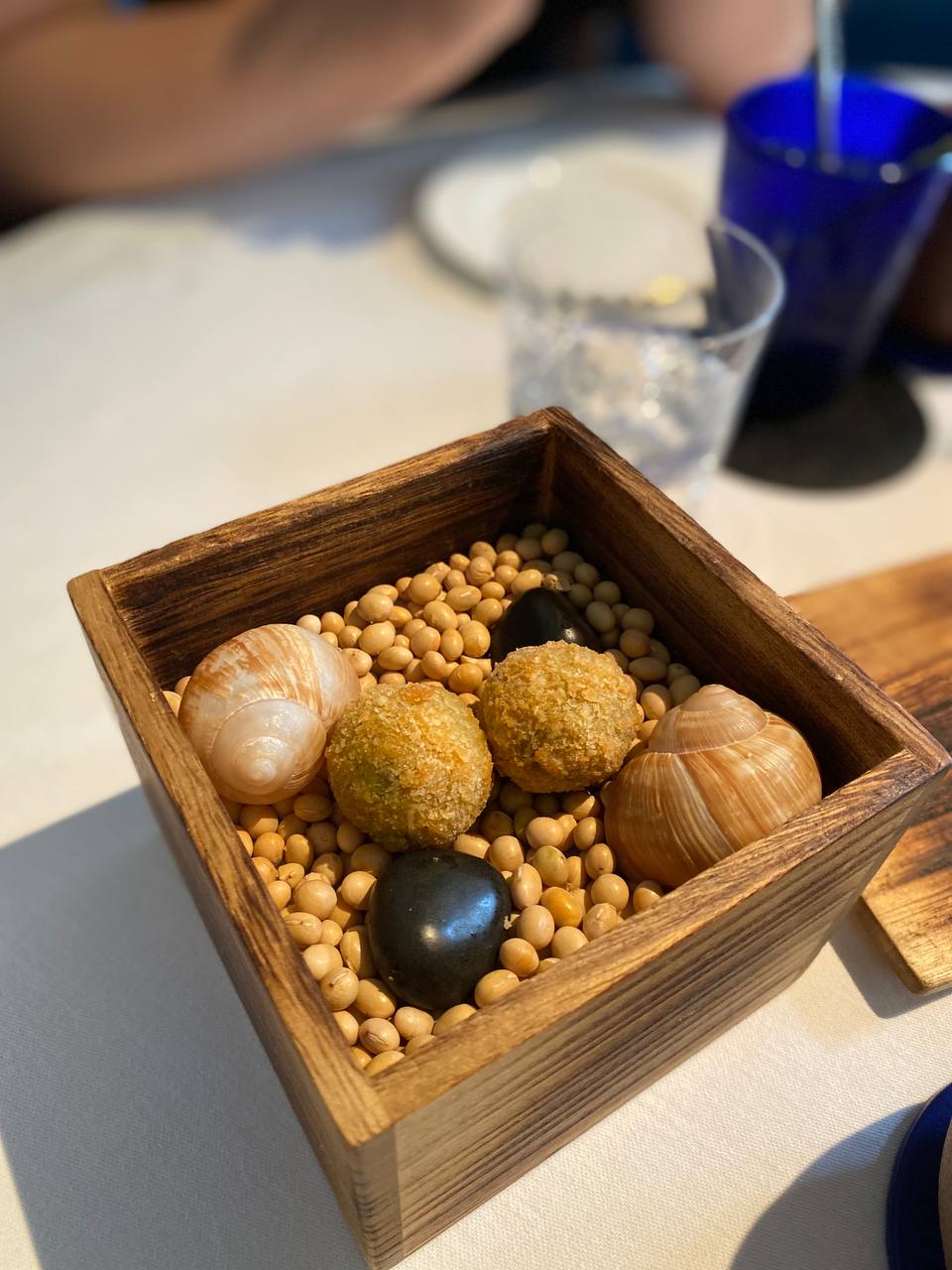
Smoked salmon with almond milk and brown butter:
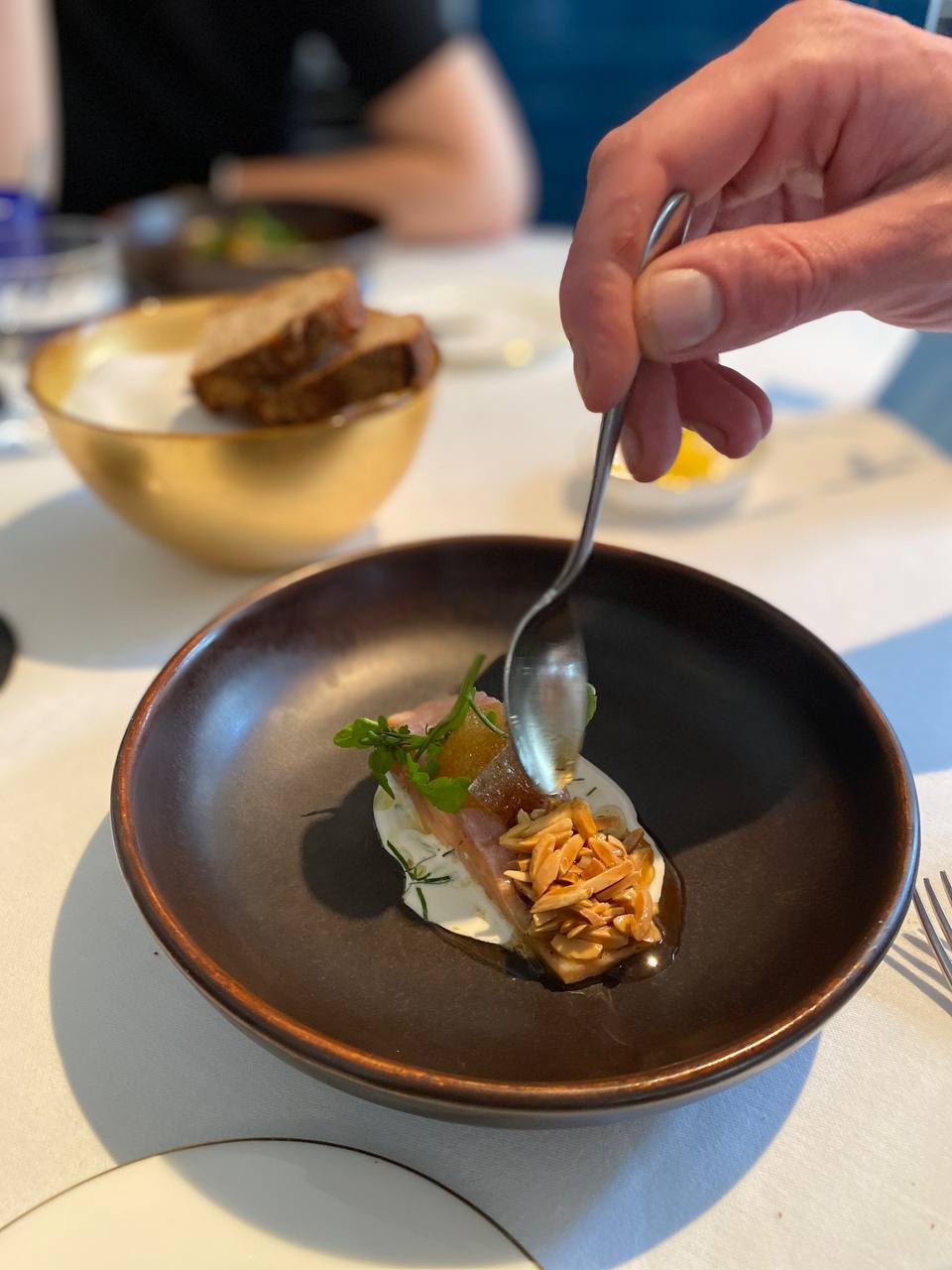
Mussels and seaweed custard, beef tendons, and chive oil at Aulis, a chef's table experience for ⭐️⭐️⭐️ L'Enclume, where there is a single table that sits 8 people and you all talk and watch the chef who prepares more than a dozen dishes in front of you.
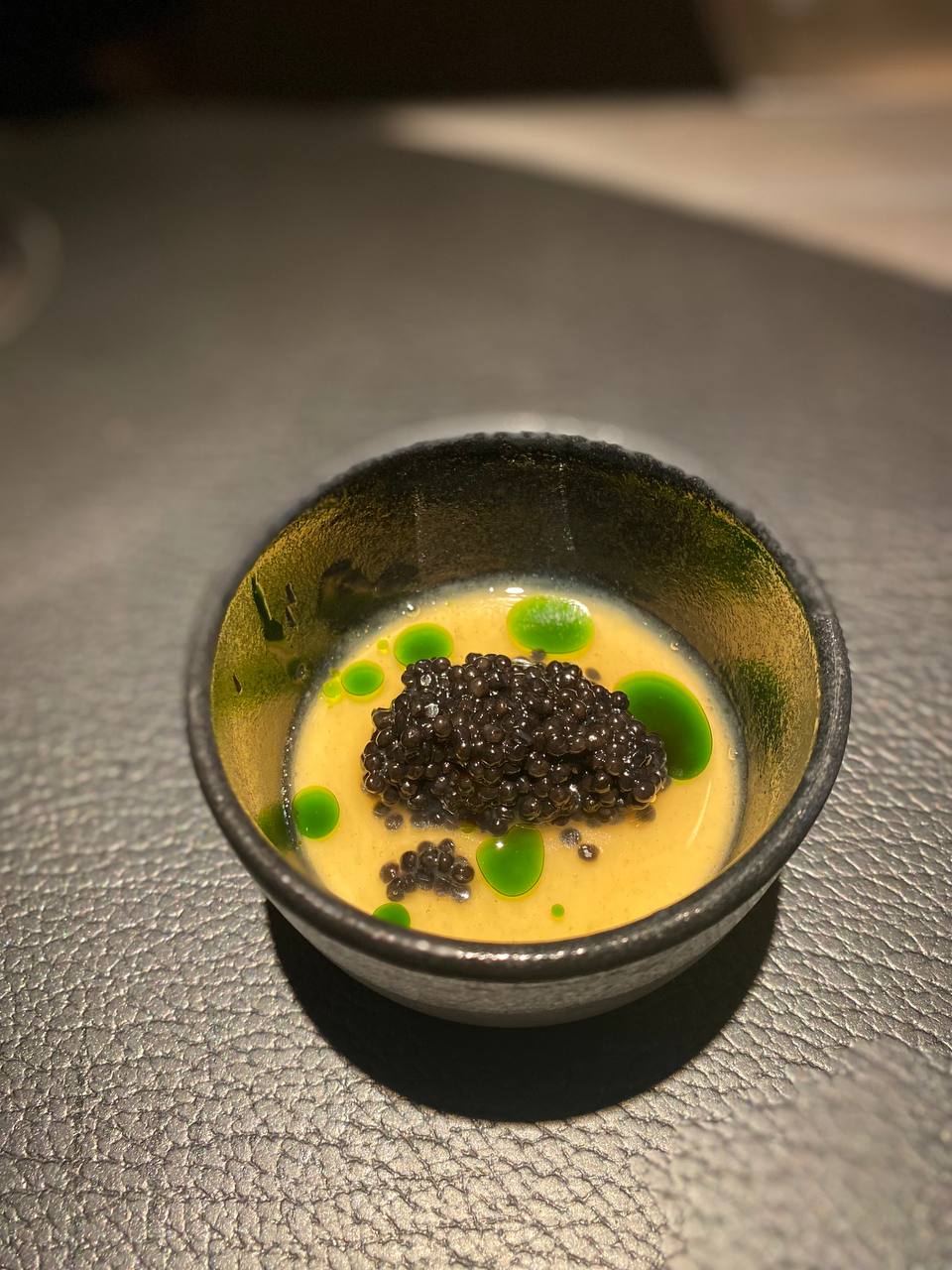
Tunworth cheese ice cream and truffle honey:
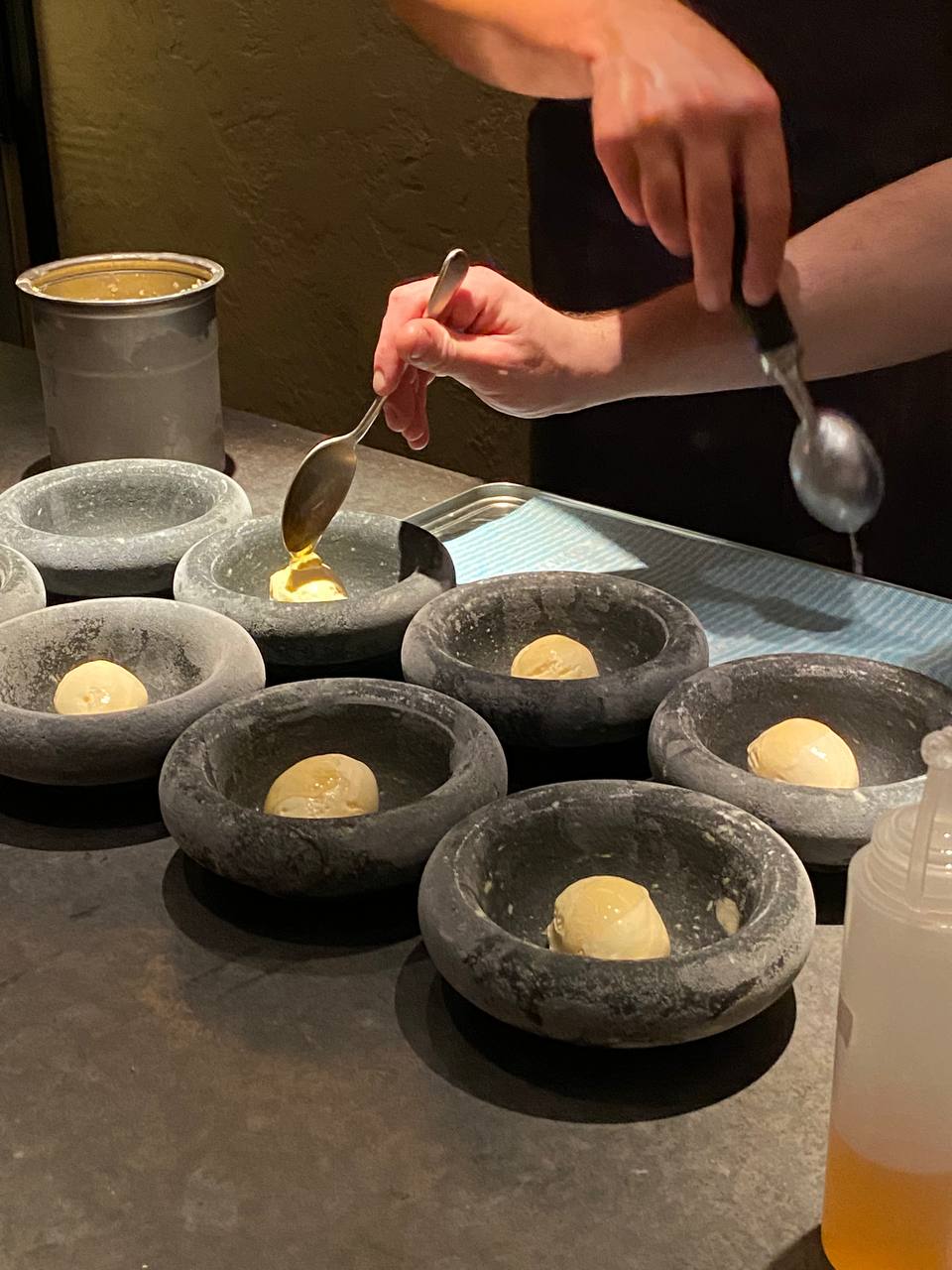
And probably the most unexpected drink so far was Dr. Henderson from ⭐️ St. John's, where I've been nearly five years ago but didn't know enough about food to enjoy it fully.
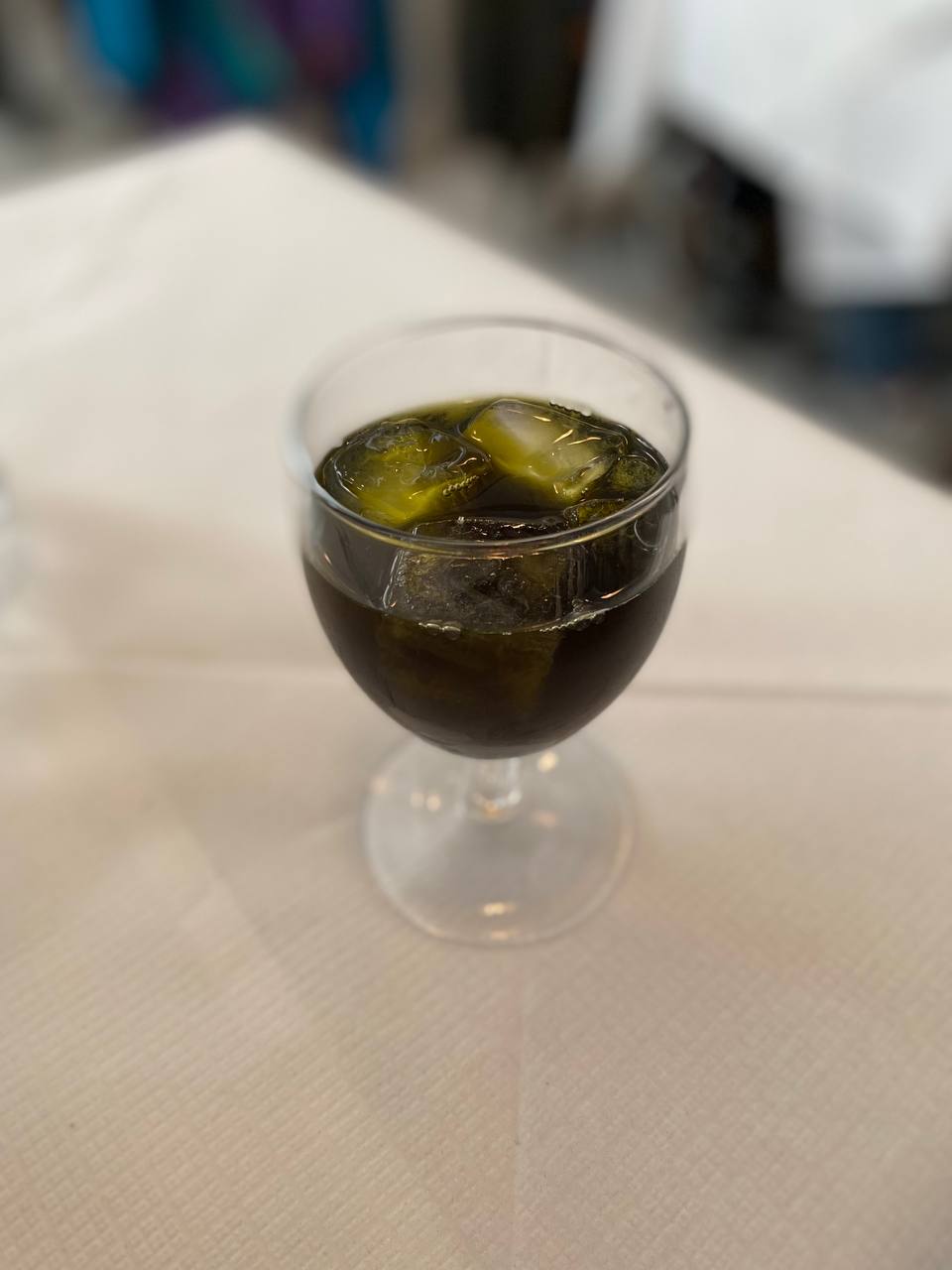
More starred places are coming tomorrow, so we will see if anything makes it to the new list of favourites.
On a completely separate note I am currently working my way through applying for a Global Talent visa so probably will be reaching out to folks who have seen me speaking at conferences and writing code for companies to secure a few recommendation letters – stay tuned!
Things I enjoyed reading ¶
1. Morning, Noon, and Night With Joké Bakare at Chishuru in Brixton by @AdamCoghlan ¶
A really pleasant format: mostly pictures, and the text is only supplementary, but it still tells the story in great details.
However, recently there have been problems with Nigerian suppliers in the north of the country — where Bakare grew up — because of sectarianism. Fonio, a staple grass grain, is now particularly difficult to get, Bakare explains. Ordinarily it would have been sourced from a women’s cooperative but they can’t get to the farm.
Judging by some guides, this Brixton restaurant was named among the top few in London, so we probably should pay them a visit some time soon.
2. A New Story for Stonehenge by Simon Akam ¶
What's the meaning of Stonehenge? I feel like someone tries to answer this question pretty much every year, and every year they are more and more convincing. This is a fresh attempt:
The revision began with a kind of social coincidence. In 2008, Bevins received an e-mail from a retired geologist named Rob Ixer, with whom he’d once provenanced a collection of axe-heads. Ixer was convinced that he’d stumbled upon a more accurate way to provenance the bluestones. Earlier that year, two archeologists, Tim Darvill and Geoff Wainwright, had conducted the first excavations inside Stonehenge in more than forty years, and asked Ixer to examine some of the thousands of stone fragments brought up to the surface.
Also check out that Ylvis music video I've mentioned a year ago.
3. One-line drawings by Zack Scholl ¶
Blending art and programming together usually produces really beautiful resultats, like here:
These drawings are simple and beautiful. I got to thinking about reproducing them. But instead of printing them with an inkjet printer, I was interested in drawing them in the style they were meant to be created - using one line.
On a somewhat related note I keep toying with an idea to set up a thermal printer to either print cocktail orders, or Github tickets, or maybe RSS feed, but seems like the amount of paper waste just doesn't make any sense.
4. Where I go: my life as a mentalist by Gabe Abelson ¶
I loved the show Mentalist back then, and honestly spent some weeks watching videos with card tricks and so on, but never actually got to learn something party-worthy. This is a completely different story of someone who got actually really good at it:
The longer I do this work, the less I believe in the supernatural and the more I believe in intuition. So much of what I do is based on psychology, observing human behavior, and recognizing patterns of thought and body language. It’s also about knowing how to control someone’s choices through linguistics or “verbal judo,” as mentalist Andy Nyman calls it. I can get a volunteer to make the choices I want them to make without them, or the audience, ever getting a sense of my process.
Maybe it is worth to give it a try again.
5. Are film critics losing sync with audiences? by stephenfollows ¶
I rarely look at the critics' scores when I am picking up a movie. A few movies I've enjoyed have very low ratings among the professionals, and impeccable scores among ordinary folks, so why does it happen then?
We need to start by looking at whether there is any link between the tastes of the two groups. Each yellow dot on the chart below is a movie in the dataset, displaying it’s Metascore and IMDb user score. I’ve also added a green trendline to help show the overall pattern.
This is an interesting attempt at going through a bunch of records from both audiences and then a few attempts to compare them to each other.
6. The book that sank on the Titanic and burned in the Blitz by Tim Stokes ¶
A pretty much detective story about a probably one of the most beautiful books in the world that got repeatedly destroyed:
For both boards, hundreds of pieces of coloured goatskin needed to be prepared and cut, numerous jewels had to be set in place each within their own individual clasp, and weeks were spent applying intricate gold tooling across all the surfaces.
At least nowadays we have torrent trackers.
7. The remarkable brain of a carpet cleaner who speaks 24 languages by Jessica Contrera ¶
Learning a new language is the real superpower, as it unlocks access to some otherwise unavailable knowledge and experiences. Pretty cool that for some people it's easier than for the others:
Vaughn glances at me. He is still underselling his abilities. By his count, it is actually 37 more languages, with at least 24 he speaks well enough to carry on lengthy conversations. He can read and write in eight alphabets and scripts. He can tell stories in Italian and Finnish and American Sign Language. He’s teaching himself Indigenous languages, from Mexico’s Nahuatl. to Montana’s Salish. The quality of his accents in Dutch and Catalan dazzle people from the Netherlands and Spain.
Yet here I am, struggling to memorise verbs in Italian.
8. The Chinchillas and the Gold Mine by Ed Stoddard ¶
A mining project was in danger due to a few rare species, so they've decided to move them to another place which turned into a logistic nightmare:
Operation chinchilla will hardly have the drama of an elephant capture. The short-tailed chinchillas are being moved via small traps to an area that scat and other evidence suggest was once a part of their range, according to Luis Ortega, the Chilean environmental manager overseeing the rodent removal. The animals are easy prey: Fur hunters can scoop the rabbit-sized rodents by hand from their shallow dens, Ortega said.
The article is a few years old though, so probably by know the story has its happy ending.
9. Redesigning an App, One Day a Week at a Time by @pketh ¶
A really nice overview of things that worked and things that didn't during a year long redesign of a web app:
Making mockups is easy, communicating is hard. So the first thing to do was establish a shared foundation and vision. I started by asking questions to understand the thinking behind the existing design, and by collecting feedback from the community.
I also really enjoyed some of the more unconventional UI decisions thrown here and there.
10. How to sign off an email by Bartleby ¶
Given that we've been using emails for quite a few decades now, it doesn't surprise me that there must be some etiquette to it.
Next, be consistent. “Yours truly” was a common way to conclude a business letter in the 19th century. But in that era correspondence was layered with nuance. “Yours faithfully” could be preceded only by “Dear Sir” (or, on rare occasions in commerce, “Dear Madam”). If the recipient was named (“Dear Mr So and So”) then the book-end was “Yours sincerely”. Today writers fasten the formal to the informal. If your subject line is “Now in paperback” don’t overcompensate by personalising your sign-off. If you send out a press release on emissions cuts, do not end your note with “Hugs”.
I am usually too lazy to change the default template though.
Things I didn't know last Tuesday ¶
1. Tselovalnik ¶
In Russian this word ("целовальник") literally means "kisser", but in fact was used as "sworn man":
Nowadays, usage of the term often refers to its 19th-century meaning: under the Russian state alcohol monopoly, vodka sellers in taverns were commonly called tselovalniks because they gave a cross-kissing oath not to dilute vodka supplied from state-controlled distilleries and to sell it according to the demand.
So this is how the first Russian bartenders were called.
2. Artificial amplification of the taste of salt ¶
Folks in Japan invented chopstics that hit food with electricity to transmit sodium ions which in turn amplifies the feeling of saltiness and umami.
The device transmits sodium ions from food, through the chopsticks, to the mouth where they create a sense of saltiness, according to Homei Miyashita, a professor at Meiji University in Tokyo, whose laboratory collaborated with the food and drink manufacturer Kirin to develop the device.
This way people eat less salt, which keeps them healthier.
3. Monobloc ¶
I didn't know that this chair shape has its own name:
The Monobloc chair is a lightweight stackable polypropylene chair, usually white in colour, often described as the world's most common plastic chair.

I would just say a "plastic chair".
4. Five Suns ¶
Aztec myths are among the most wild ones, so whenever I read about them I wish there were more movies or series based on those stories.
In the context of creation myths, the term Five Suns describes the doctrine of the Aztec and other Nahua peoples in which the present world was preceded by four other cycles of creation and destruction.
Ideally in the style of the series American Gods.
5. Zettelkasten ¶
Friends mentioned this approach to me over the weekend, and I actually didn't even know it has a name:
A zettelkasten consists of many individual notes with ideas and other short pieces of information that are taken down as they occur or are acquired.

I will probably give it a try and see if I could migrate my notes for the newsletter over to Obsidian and automate some of the process.
6. Bonne projection ¶
For some reasons I've never seen maps in alternative projects while at school. Maybe they didn't want me to see that Russia is not as big as it looks like on the map.
The Bonne projection maintains accurate shapes of areas along the central meridian and the standard parallel, but progressively distorts away from those regions.
This one gives a better perspective:

7. Chicken of Tomorrow contest ¶
Did you know that the chicken we eat increased in size by 360% over the last 50 years, but supposedly lost in flavour? Apparently it was done on purpose:
The batches were coded so that only a few people knew their identity and put into one hatching pen per breeder, dark chickens next to white in case any got loose and tumbled into the pen next door. Once the eggs hatched, 410 chicks—400 for judging and 10 extra in case any came to harm—were picked at random from each batch of 500 and driven to new purpose-built barns.
The story behind it is pretty interesting too, as they actually had to put lots of effort to make sure the contest is as honest as possible.
8. Hydrazine toxins in morels ¶
As most menus serve morels given that they're in season, I had to read about them a bit, and that's a very unusual mushroom:
Morchella species are thought to contain small amounts of hydrazine toxins or an unknown toxin that is destroyed through cooking, (the presence of hydrazine is controversial since there are no primary references of hydrazine having been detected in the species); because of this, morels should never be eaten raw. It has been reported that even cooked morels can sometimes cause symptoms of upset stomach when consumed with alcohol.

To be fair, no one told me that it might be unwise to consume those with alcohol, but I will probably bear it in mind for the next time.
9. Sprezzatura ¶
This is a beautiful word:
The word has entered the English language; the Oxford English Dictionary defines it as "studied carelessness", especially as a characteristic quality or style of art or literature, although it is also used in the aesthetic context.
So essentially, that's when you're chill but you still give a shit: when you're comfortable and natural despite investing effort and time.
That's how I try to live by, and yet rarely succeed.
10. The alteration of the Doctor's Sausage recipe ¶
While this low-fat Bologna is the sausage I've been eating for the first two decades of my life, I never thought it first went through a few recipe changes (for the worse), but also supposedly played and important role in the fall of the Soviet Union:
The alteration of the Doctor's Sausage recipe is sometimes cited as one of the events presaging the eventual downfall of the Soviet Union.
I also didn't know that its name is coming from the low fat content, so it literally was prescribed to people as a healthy source of nutritions.
Book of the week ¶
Another highlight of the week for me was grilling a whole octopus on a BBQ to serve with tacos, which required lots of research.
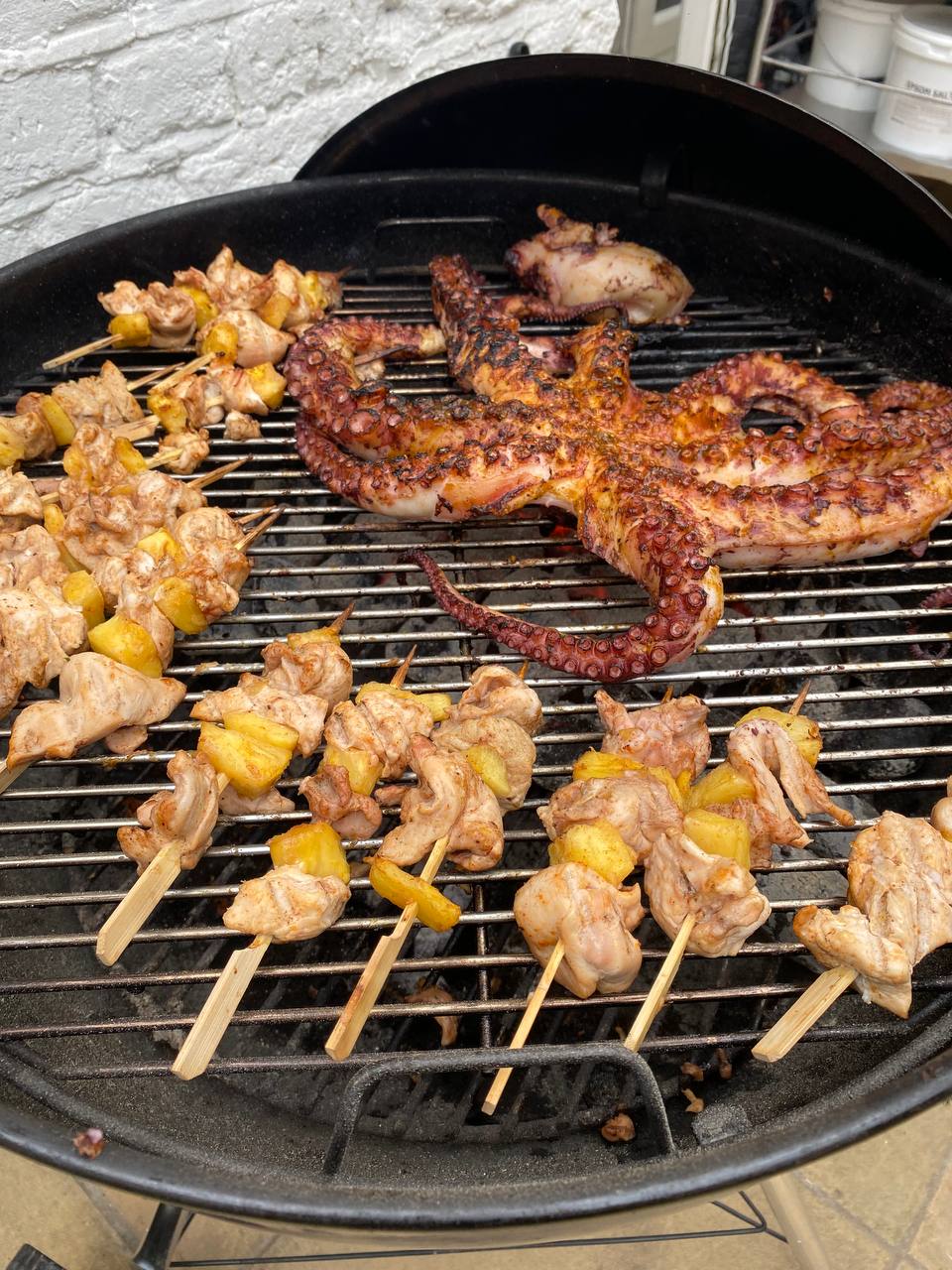
Mainly the research was based on Alex Stupak's Tacos:
Empellón Taqueria opened on March 21, 2011. I remember it as the day I realized I had no idea what the hell I was doing. I thought tacos would be an easy entry point for me as a chef: a tortilla, some salsa, a filling. Simple enough, until the first night of service arrived and the complexity of a well-made taco became maddeningly clear.
All at once, I understood that the life span of a warm tortilla is stupidly brief—that making sure a taco arrives at the table with some fight left in it is a sophisticated orchestration of timing and planning; that I was not at all prepared for this. We were slammed with mile-long tickets: 19 tacos for a four-top, each requiring its own, intricate prep. The tortilla station couldn’t keep up, and we were instantly in the weeds. I had invited my father and a journalist to join us in the kitchen on opening night, and both of them looked on in abject horror as we went down in a blaze of expletives.
Tacos, man. Who knew?
The author staged at Wylie Dufresne's wd~50 and worked with a few other modernist cuisine adepts, but went a completely different way – and that makes the whole book even more interesting, as it combines both the fine dining precision and plating, and Mexican generousity.
I didn't yet get the chance to try out the majority of salsa recipes from there, but can already highly recommend the one based on Mezcal. That's a great idea and an easy way to boost those smoky notes in pretty much any dish.
Speaking about the octopus though, I feel like there is way more for me to learn and address the next time. I probably should order some more for scientific purposes.
Thank you and see you in a week! ¶
If you have any questions, or want to suggest a link for the next newsletter, please drop me a message on Twitter or reply to this email.
Cheers! 🍸